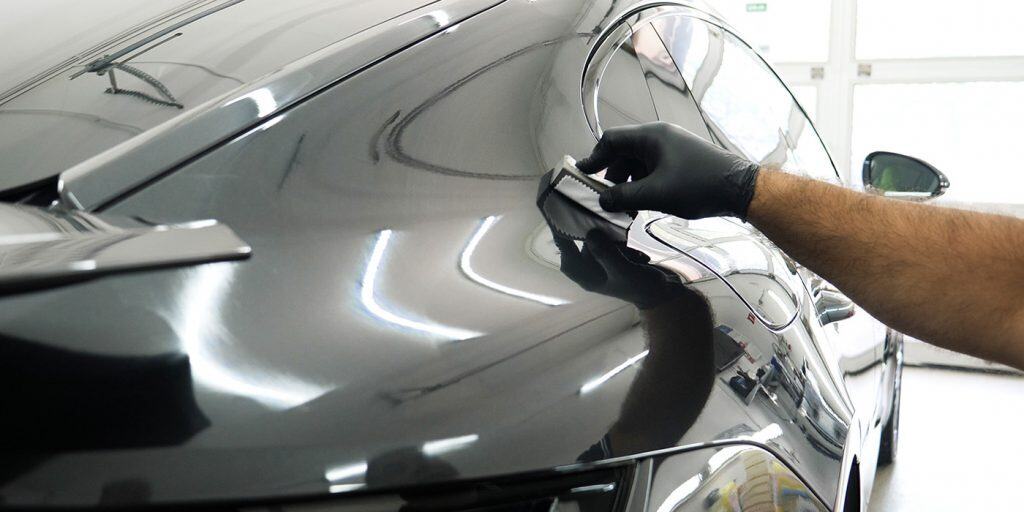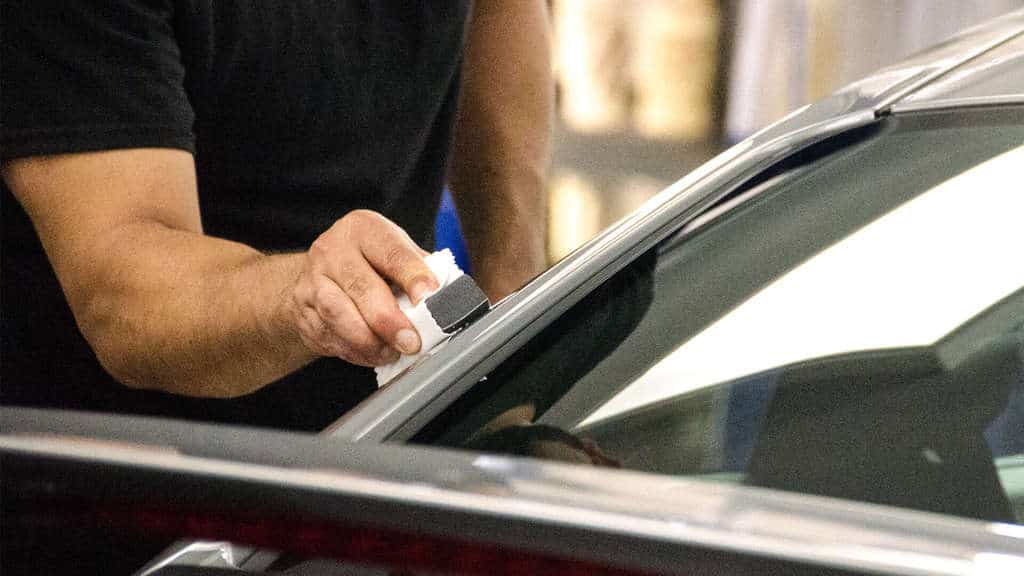Is Ceramic Coating Worth the Investment for Your Car’s Exterior?
Is Ceramic Coating Worth the Investment for Your Car’s Exterior?
Blog Article
Ceramic Finishing vs. Typical Wax: Which Offers Much Better Long-Term Security?
The debate in between ceramic layers and traditional wax for lorry defense has garnered substantial attention amongst automotive fanatics and experts alike. Ceramic finishes boast exceptional longevity and resistance to ecological elements, yet the complexity of their application increases questions regarding availability and functionality.
Summary of Ceramic Coating
Ceramic covering has actually acquired significant appeal among auto fanatics and detailers alike as a result of its sophisticated safety high qualities. This innovative technology is created to create a sturdy, hydrophobic shield over a vehicle's paint surface area, considerably boosting its resistance to environmental pollutants such as dust, UV rays, and chemical stains. Unlike traditional wax, which gives a momentary layer of defense, ceramic finishes bond at a molecular level with the paint, providing resilient resilience-- frequently expanding beyond 2 years with correct maintenance.
The application procedure entails meticulous preparation of the automobile's surface area, including cleaning and brightening to make certain optimum adhesion. Once applied, the finish treatments to create a durable layer that not only includes depth and gloss to the paint but likewise streamlines upkeep. With its hydrophobic residential or commercial properties, ceramic layer enables water and dirt to slide off even more conveniently, reducing the frequency of washes and decreasing the risk of swirl marks.
Additionally, ceramic layers are readily available in various formulas, enabling individuals to select items customized to their details demands and choices. Generally, ceramic covering stands for a significant improvement in paint defense innovation, delivering remarkable efficiency compared to standard choices.
Introduction of Typical Wax
Generally related to as a staple in vehicle care, wax works as a popular selection for those looking for a straightforward approach to boost and secure their automobile's paint - ceramic coating. Automotive wax normally consists of natural ingredients, such as carnauba, or synthetic compounds, developed to create a safety layer externally of the paint. This layer not just boosts the automobile's gloss and shine but additionally gives an obstacle against ecological pollutants
The application of wax is generally user-friendly, making it obtainable for both professionals and do it yourself fanatics. It can be used by hand or device, permitting for flexibility in the outlining process. As soon as applied, wax calls for a healing duration, after which it hardens to create a protective shell. Wax is also understood for its ability to fend off water, advertising a beading effect that aids in the avoidance of water spots and rust.
Nevertheless, while wax works for enhancing the visual appeal of an automobile, it is important to note that the defense it provides may demand more regular reapplication contrasted to different products, such as ceramic coatings. In general, standard wax remains a popular option for those prioritizing ease of use and instant aesthetic renovation.
Durability and Durability Contrast
While both ceramic coverings and conventional wax deal protective benefits for automobile paint, their durability and longevity differ considerably. Standard wax, typically made from natural carnauba or synthetic polymers, generally gives a safety layer that lasts around 3 to 6 months. This fairly short life expectancy browse around this site requires routine reapplication to preserve ideal defense.
In contrast, ceramic finishings are engineered from sophisticated nanotechnology, creating a covalent bond with the paint surface area. This causes a durable, hydrophobic layer that can endure for 2 to five years, relying on the item and ecological conditions. The superior longevity of ceramic finishes is credited to their chemical framework, which provides enhanced resistance to scrapes, UV rays, and oxidation.

Security Versus Environmental Variables
Safeguarding a vehicle's paint from environmental variables is critical for preserving its look and worth in time. Vehicles are regularly subjected to a range of components, consisting of UV rays, bird droppings, tree sap, acid rainfall, and roadway grime, every one of which can endanger the integrity of the paintwork.
Ceramic finishes supply a durable protection versus these ecological assailants. Unlike conventional wax, which can break down quickly under UV direct exposure, ceramic coatings create a sturdy, hydrophobic layer that stands up to the damaging effects of sunshine and environmental toxins. This innovative modern technology creates a chemical bond with the car's surface area, supplying exceptional security that lasts for several years, also in severe conditions.
Conventional wax, while less complicated to apply, commonly requires frequent reapplication and supplies minimal resistance to pollutants and UV rays. Over time, it can damage down, leaving the paint prone to scrapes and oxidation. In contrast, ceramic layers keep their safety top qualities longer, significantly decreasing the danger of paint damage and making sure that the lorry retains its visual appeal. Consequently, ceramic finishes are significantly identified as the premium selection for long-lasting defense versus ecological elements.
Application and Upkeep Distinctions
The techniques of application and succeeding upkeep his explanation for ceramic layers and standard wax differ substantially, impacting the overall user experience and performance of each product. Ceramic finishings require an even more elaborate application procedure, usually involving surface area prep work that consists of washing, sanitizing, and brightening the car. Once the surface area prepares, the ceramic coating is used in a regulated environment, usually needing expert know-how to guarantee correct curing and bonding to the paint.

While both products enhance lorry appearance, the longer-lasting security used by ceramic coatings may validate their Visit Your URL first financial investment, despite the more requiring application process. Conversely, conventional wax remains a prominent option for those looking for a less complex, albeit temporary, solution.

Verdict
Finally, ceramic layers show substantial benefits over conventional wax in regards to longevity and environmental management. With a life expectancy prolonging two to five years and superior resistance to UV rays, dirt, and chemical discolorations, ceramic finishes supply an extra efficient option for long-term vehicle upkeep. Although the application procedure might need specialist expertise, the resulting price financial savings and minimized regularity of reapplication highlight the worth of ceramic finishings for those seeking optimal lorry defense.
The argument between ceramic coverings and conventional wax for vehicle defense has actually garnered substantial interest among automobile lovers and professionals alike. Unlike traditional wax, which supplies a temporary layer of protection, ceramic layers bond at a molecular level with the paint, supplying lasting durability-- usually prolonging past two years with correct maintenance.
While both ceramic coatings and traditional wax offer safety benefits for vehicle paint, their sturdiness and longevity vary significantly. For cars and truck enthusiasts looking for long-lasting defense, ceramic finishings present a compelling benefit over typical wax products.
In final thought, ceramic coatings demonstrate considerable advantages over typical wax in terms of resilience and ecological defense.
Report this page